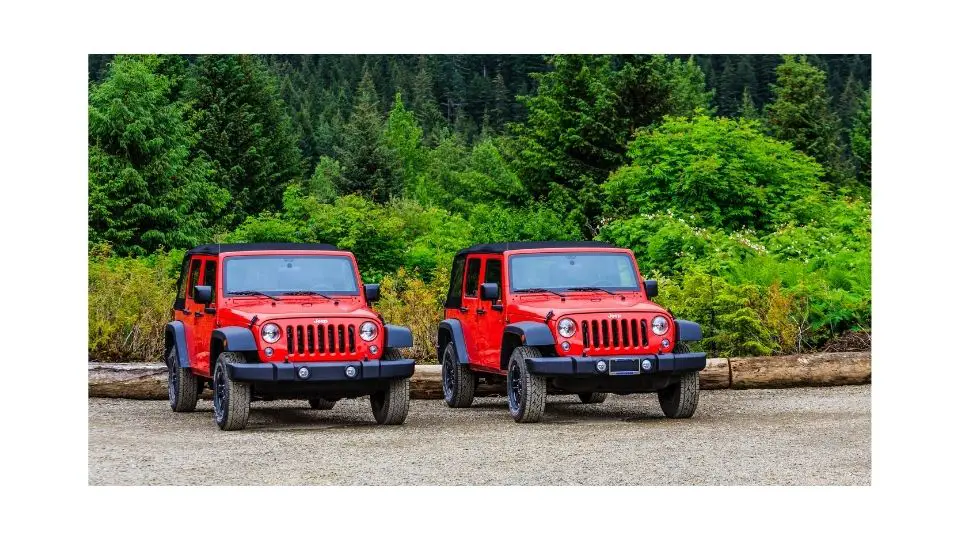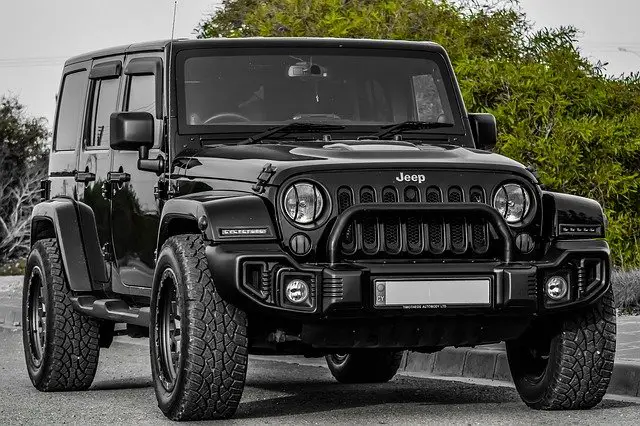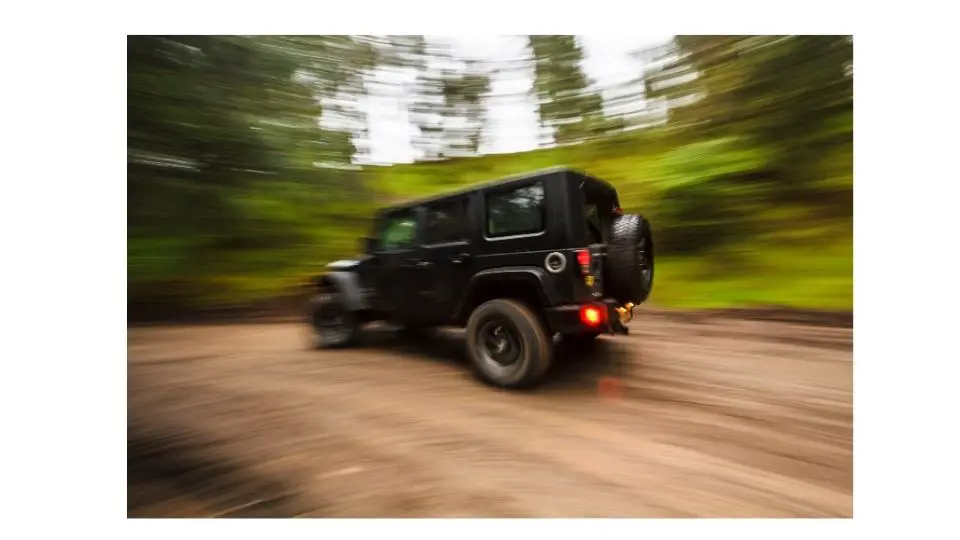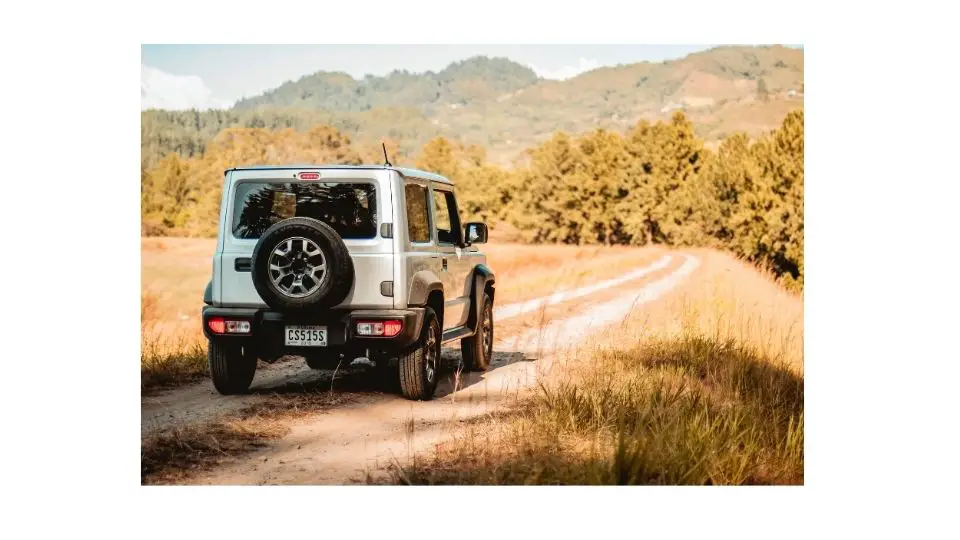The Jeep Wrangler represents the ultimate expression of freedom and adventure. The varying terrains it conquers, and the capacity to adapt and upgrade, make the differences in tire sizes of your Jeep Wrangler captivating discussion for enthusiasts and hobbyists. Understanding the impact of different tire sizes on the Jeep Wrangler’s performance requires a solid comprehension of tire sizes and their nuances. Whether you’re journeying through daily drives or pushing the limits on rocky trails, the tire size significantly dictates the control, safety, and ride quality of your beast on wheels.
Understanding Tire Sizes on Your Jeep Wrangler
There’s nothing quite like the thrill of steering your beloved Jeep Wrangler down an untamed track, defying the odds and pushing the boundaries of what most people would call “driving”. Each rugged terrain becomes your own personal playground. You’re not alone in the quest to show what the trusty Wrangler can achieve. One thing that contributes greatly to your beastly rides is – you got it, the tires!
Understanding the nuances of tire sizes for a Jeep Wrangler can seem daunting to a newbie. This compilation of tire wisdom will help you navigate through the alpha-numeric jargon printed on the sides of those chunky bouncing beauties.
The coding on the tire, often manifesting as a format like “P275/65R18”, is chock full of useful nuggets of information. Breaking it down:
- Type: The initial letter stands for the type of vehicle the tire is designed for. In the example provided, “P” indicates the tire is meant for passenger vehicles. Notably, Jeep Wranglers can handle “LT” designated tires designed for light trucks, to handle more substantial loads and rougher environments.
- Width: Following the first letter, the next three digits (275 in this case) refer to the width of the tire tread in millimeters. A larger number implies a wider tire and subsequently more traction, especially handy for those off-road escapades. If you’re not familiar with millimeters, this converter will help you.
- Aspect Ratio: After the slash, the number (65 here) represents the aspect ratio of the tire, which is the height of the tire sidewall as a percentage of the tread width. So here, the tire’s height is 65% of its width. Lower ratio tires may offer more stability and better steering response, while higher ratio ones generally provide a cushier ride.
- Construction: The letter after the aspect ratio denotes the tire’s construction. Almost all Jeep Wrangler tires will have “R” for radial. This means the internal ply cords are radially aligned from the center.
- Wheel Diameter: The final digits (18 in this case) note the wheel’s diameter in inches. This is the dimension of the wheel that the tire is intended to fit.
Even seemingly minor adjustments to your tire size can drastically affect your Jeep Wrangler’s performance.
Looking for increased power and traction for those wonderful off-road adventures? Larger, wider tires can provide that. Remember they might also affect your speedometer and odometer readings due to larger tire circumferences.
Want to achieve better mileage on regular roads? Narrower, smaller tires could offer better fuel efficiency.
Navigating through tire sizes can seem complex. This guide will help. Choosing the optimal tire for your Jeep Wrangler just got simpler. Remember, knowledge breeds confidence and control – and that’s what we all want when we’re challenging the wild in your Wrangler.
Want to know more about hidden featuresa and easter eggs in you Jeep Wrangler? We cover this in this article!
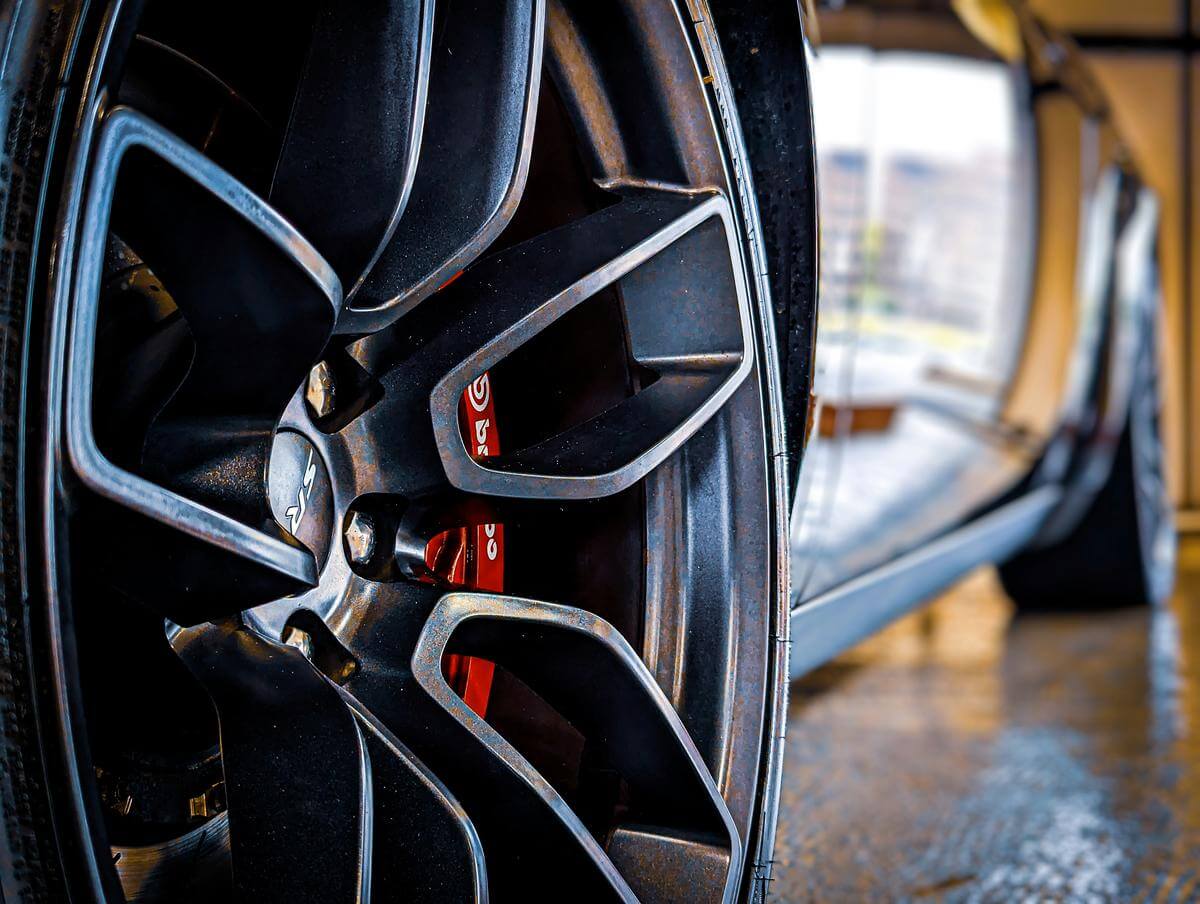
Standard Tire Size for Jeep Wrangler
One of the aspects that distinguishes different models of Jeep Wranglers is the standard tire size. Now that we’ve got a good grasp of the basic tire concepts
- width,
- aspect ratio,
- construction,
- wheel diameter,
let’s dive into specifics.
First up, the Jeep Wrangler JK, produced from 2007-2018, is commonly seen with a 32-inch tire, specifically LT255/75R17. This size is renowned for its seamless blend of on-road comfort with superior off-track capabilities.
As for the Jeep Wrangler JL, succeeding the JK from 2018 till today, LT285/70R17 is the standard. Along with being a slight size increment, this provides an improved ground clearance, resulting in enhanced off-road abilities.
The Jeep Wrangler TJ, manufactured between 1997 and 2006, typically sports the P225/75R15 tire size. This size, although slightly thinner than that of its successors, is perfect for the TJ’s lightweight and nimble properties.
The Jeep Wrangler YJ, often hailed as the Wrangler that started it all with its production running from 1987 to 1995, is equipped with the P205/75R15 tire size. This makes sure that the Jeep, while maintaining its iconic look, stays comfortable and easily maneuverable.
Lastly, there’s the majestic beast that is the Jeep Wrangler Rubicon. Known for its off-road prowess, the Rubicon standard is a 33-inch tire size – LT285/70R17. This robust size is designed to help the Rubicon effortlessly overcome any terrain, while also improving steering response and driving dynamics.
Remember that these sizes are the ones that roll off the factory floor and each of these models is capable of accommodating larger tires.
What to Consider Before Switching to Other Tire Sizes on Your Jeep Wrangler?
If you decide to switch from the standard specifications, make sure you consider different things like
- axle strength
- brake capability
- power delivery,
- fuel efficiency, and
- speedometer accuracy.
Any modifications may impact overall driving experience and vehicle mechanics. So, it’s advised to always analyze these considerations thoroughly.
Ultimately, having knowledge isn’t just about picking the right tire size for your Jeep Wrangler model. It’s about understanding why that size is ideal. If you understand that, you can confidently drive your Wrangler. It gives you confidence knowing well every bump, turn, or trail won’t keep you from conquering it in your Jeep.
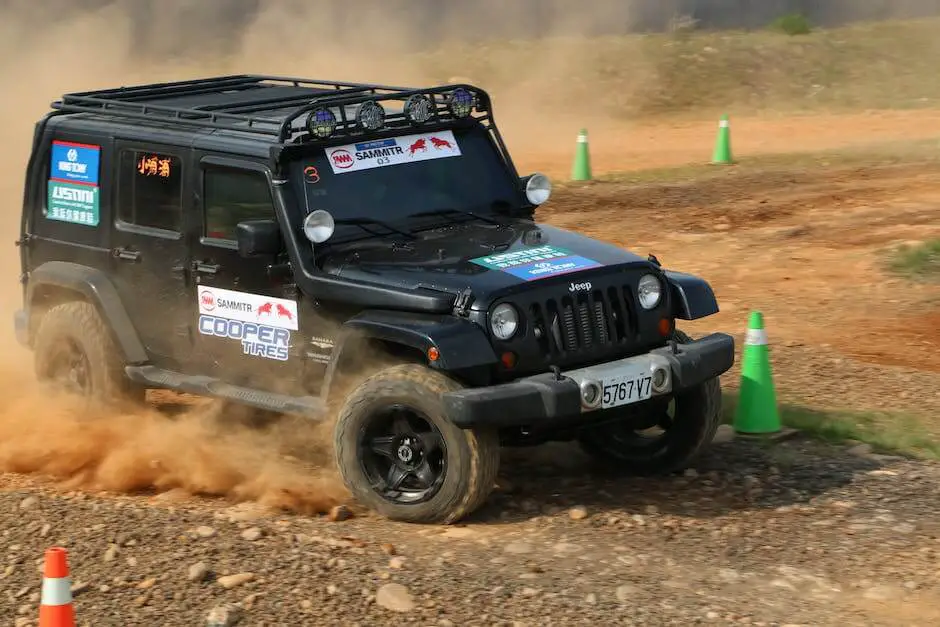
Upgrading Jeep Wrangler’s Tire Size
Steering Into Specifics: Tire-Sizing Considerations for Jeep Wranglers
There’s a bounty of knowledge to uncover, especially when it comes to tire-sizes on various Jeep Wrangler models!
It goes without saying that every Wrangler model has its own compelling charm. Still, the subtle nuances of these utility vehicles significantly contribute to performance, particularly the tires.
The iconic Jeep Wrangler JK, for instance, is standard equipped with LT255/75R17. These 32-inch wonders offer solid traction and stability, enabling the Wrangler JK to conquer obstacles, one rocky terrain at a time. These robust dimensions contribute to a thrilling off-road experience, enhancing ground clearance, and significantly improving the vehicle’s ability to traverse large obstacles.
Switching gears to the newer kid on the block – the Wrangler JL. It features a more aggressive standard tire size of LT285/70R17. Augmented ground clearance offered by these tires amplify Jeep’s inherent off-roading abilities, while ensuring that no path feels too daunting. This upgrade provides even more ground clearance and improved off-roading abilities, allowing drivers to tackle even more challenging terrains without breaking a sweat.
Looking back at a classic, the Wrangler TJ enjoyed global fondness with its nimble handling amplified by the standard P225/75R15 tires. Although smaller in size compared to its compatriots, its beautifully thin profile makes the TJ feel lightweight yet swift. Though less hefty than its successors, the thinner tire size does not compromise the TJ. In contrast, it compliments the model’s lightweight and nimble nature, making for a more comfortable on-road experience while still capable of off-road exploits.
Meanwhile, comfort and agility mesh well together with the Wrangler YJ with the standard tire size of P205/75R15. This perfect combination of compact structure and maneuverability allows the YJ excel in urban conditions with exceptional ease. The focus here is on comfort and maneuverability, ensuring a pleasant ride on all kinds of terrains.
And last but not least, when it comes to the daring adventures off the paved roads, the Wrangler Rubicon notches up a level with standard LT285/70R17 tires. This particular size blesses the Rubicon with nimbler off-road capabilities and improved driving dynamics – an essential for any thrill-seeking enthusiast. These specifically designed tire dimensions are geared towards stalwart terrain-conquering performance, fitting for the Rubicon’s reputation.
It’s crucial to note that the adaptability of all Jeep Wrangler models is inherently incredible. This line of off-roaders comfortably embrace larger tire sizes, thereby significantly enhancing their road presence and performance.
Ending on a high note, comprehending why the ideal tire size was chosen for your specific Jeep Wrangler model is not just intriguing, it’s empowering. It allows avid motorists and Jeep enthusiasts to evolve their understanding of their vehicle, enhancing their overall relationship with it. With a keen focus on the versatile world of tire sizes and their impact, any Wrangler owner can confidently conquer the trails, while appreciating the nuances of their off-roader. Remember, in the world of Jeep, knowledge isn’t just power – it’s adventure!

Recommended Tire Sizes for Different Uses
Tire Sizes for Off-Road Action
Do you want to improve grip on mud, rocks, snow or gravel? Then off-road tires are the first choice. Off-road tires have a deeper tread, larger dimensions and a higher sidewall ratio than standard tires. Whether you want to lift your Jeep Wrangler or leave it at factory height, special tires improve overall performance when driving off-road.
When shopping for tires made specifically for off-road use, you’ll come across different size designations. Some have standard sizes, others have flotation sizes.
When it comes to tire specifications, off-road tires are often described by measuring their outside diameter in inches or millimeters. There are other important tire dimensions to consider, but the overall outside diameter serves as an important reference for comparing tire size to calculate the clearance in the vehicle’s fender.
Off-road tires have a block-like, heavy-duty tread pattern and puncture-resistant sidewalls. The construction is designed for extreme off-road conditions. These tread designs also provide better traction in mud or on soft and wet gravel. Dedicated tires can make the difference between maintaining traction in extreme conditions and spending hours trying to get your vehicle unstuck.
While getting stuck is not guaranteed, it is still risky to drive off the road with tires that are not designed for off-road use. Tires made specifically for off-road conditions are capable of safely moving a vehicle over mud, rocks, logs and other unpredictable road conditions.
Tire Sizes for Fuel Economy
Would you like to use less fuel when driving your Jeep? Narrow tires with a small diameter are the first choice. It’s not for nothing that many electric cars have narrow tires that tend to be smaller.
A narrow tire reduces the rolling resistance of your Jeep Wrangler. The higher the rolling resistance, the more energy is required to overcome it. Therefore, the rolling resistance of the tires has a significant impact on fuel consumption (and on the life of your tires). A 30 % increase in rolling resistance leads to an increase in fuel consumption of 3 to 5 %.
But before you rush to swap out your standard tires for larger or thiner ones, several considerations must be addressed. Alongside the improved road presence and off-road abilities, the implications on axle strength, brake capacity, power delivery, fuel efficiency, and speedometer accuracy cannot be overlooked.
Jeep Wrangler Tire Sizes Conclusion
Understanding the chosen tire size for your specific Jeep model is crucial to truly appreciate the engineering finesse and optimize your Jeep experience. An enthusiastic hobbyist will affirm that tire size is not a trivial detail in a vehicle’s construction – it’s an emphatic stroke in the vehicle’s character, significantly shaping the way you connect with it.
Across the joyful mud baths on an off-roading trail or a soothing sunset cruise on the highway, your jeep’s tire size plays an underrated but pivotal role. The symbiosis between your Jeep and its tires is an exhilarating blend of science, art, and passion, making tire size a fascinating facet of your Jeep Wrangling journey.

We have traversed through the significant territory of tire sizes, their upgrades, and their impacts on the performance, fuel economy, and handling of the Jeep Wrangler. The exploration revealed that the right tire size is likely to be a unique blend of daily driving comfort, off-road optimization, and performance aspirations for each Jeep Wrangler owner. Therefore, it’s a matter of balancing these factors that will decide your ideal tire size. There is no one-size-fits-all solution but rather a journey of discovery through personal experience and shared wisdom from seasoned Jeep Wrangler enthusiasts. Here’s to enhancing your Wrangler’s persona and seizing the thrill and satisfaction of a perfect ride!


